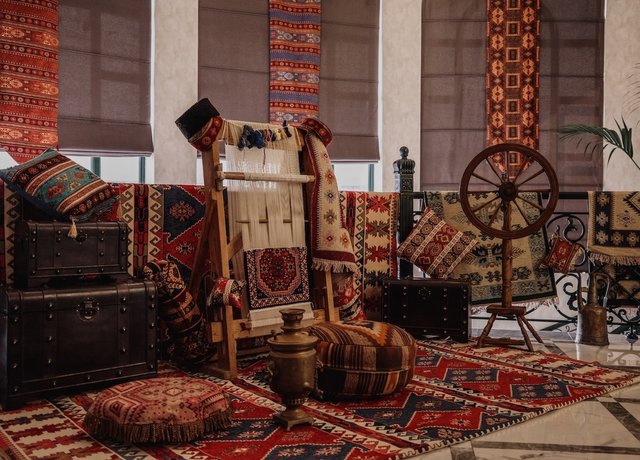The Banarasi saree, renowned for its exquisite craftsmanship and timeless beauty, is a true gem of Indian textile heritage. Originating from the ancient city of Varanasi, also known as Banaras, these sarees have a rich history that spans several centuries. In this blog, we will delve into the evolution of the Banarasi saree through different eras, tracing its journey from its inception to its status as a symbol of elegance and tradition.

Ancient Roots (15th Century and Earlier)
The roots of the Banarasi saree can be traced back to the ancient city of Varanasi, which is believed to be one of the oldest inhabited cities in the world. The art of weaving in Banaras dates back to at least the 15th century, with references to fine silk and brocade textiles being produced in the region during that time. The Mughal emperors, who ruled India from the 16th to the 18th century, played a significant role in popularizing Banarasi silk sarees. These sarees were characterized by their intricate designs, opulent motifs, and use of real gold and silver threads.
Mughal Influence (16th to 18th Century)
The Mughal period was a golden era for Banarasi sarees. Mughal emperors such as Akbar, Jahangir, and Aurangzeb were patrons of fine textiles and actively promoted the weaving industry in Banaras. The Mughal influence is evident in the designs of Banarasi sarees from this era, which featured intricate floral patterns, Persian-inspired motifs, and a fusion of Indian and Persian aesthetics. These sarees became highly sought after among the nobility and elite classes.
Colonial Era (18th to 19th Century)
During the colonial era, Banarasi sarees continued to thrive, albeit with some changes in design and production techniques. The British East India Company's presence in India brought about shifts in the demand for textiles. While traditional Banarasi silk sarees retained their allure, European demand for lighter, more affordable fabrics led to the creation of a new style known as the "English Brocade." These sarees featured simpler designs and were tailored to cater to the tastes of the British colonialists.
Post-Independence Resurgence (20th Century)
After India gained independence in 1947, there was a renewed interest in traditional Indian craftsmanship and textiles. The Banarasi saree experienced a resurgence as the nation embraced its cultural heritage. Renowned Indian designers like Ritu Kumar and Sabyasachi Mukherjee incorporated Banarasi sarees into their collections, giving them a modern twist while preserving their traditional essence.
Contemporary Appeal
Today, Banarasi sarees continue to enchant women across India and around the world. Modern designers have brought fresh perspectives to these timeless classics, experimenting with colours, textures, and embellishments. Bollywood celebrities, too, have played a pivotal role in popularizing Banarasi sarees on the global stage by wearing them at prestigious events.
The Banarasi saree has come a long way since its inception in the ancient city of Varanasi. From its royal Mughal origins to its adaptation during the colonial period and its resurgence in independent India, the Banarasi saree has evolved while retaining its cultural significance and exquisite craftsmanship. It is a testament to the enduring appeal of traditional Indian textiles and continues to be a symbol of grace, elegance, and heritage for women of all ages. As we admire the beauty of a Banarasi saree today, we are also celebrating a rich history that spans centuries and reflects the enduring charm of Indian craftsmanship.
To get more detailed information regarding Handloom sector transformation please visit our website https://reshamindia.in/